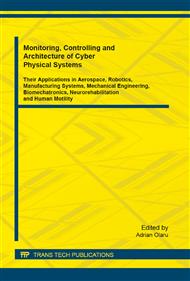[1]
B. M. Braukmann, Industrial solution amenable to biosorption. In Biosorption (Edited by B. Volusky), CRC Press, Boca Raton, FL, (1990).
Google Scholar
[2]
U. Kumar, M. Bandyopadhyay, Sorption of cadmium from aqueous solution using pretreated rice husk, Bioresource Technology (Elsevier), 97 (2006) 104-107.
DOI: 10.1016/j.biortech.2005.02.027
Google Scholar
[3]
M. Mukhopadhyay, S.B. Noronha, G.K. Suraishkumar, Kinetic modeling for the biosorption of copper by pretreated Aspergillus niger biomas, Bioresour Technol, 98 (2007) 1781-1787.
DOI: 10.1016/j.biortech.2006.06.025
Google Scholar
[4]
B.M. Brauckmann, Industrial solution amenable to biosorption, In: Volesky B, editor. Biosorption. Boca Raton, FL: CRC Press, (1990).
Google Scholar
[5]
J. Zhang, H. Fu, X. Lv, J. Tang, X. Xu, Removal of Cu(II) from aqueous solution using the rice husk carbons prepared by the physical activation process, Biomass and Bioenergy, 35 (2011) 464 – 472.
DOI: 10.1016/j.biombioe.2010.09.002
Google Scholar
[6]
V.K. Gupta, C.K. Jain, I. Ali, M. Sharma, V. K. Saini, Removal of cadmium and nickel from wastewater using bagasse fly ash-a sugar industry waste, Water Res. 37 (2003) 4038–4044.
DOI: 10.1016/s0043-1354(03)00292-6
Google Scholar
[7]
A. K. Shrivastava, A review on copper pollution and its removal from water bodies by pollution control technologies, IJEP 29 (2009) 552-560.
Google Scholar
[8]
S. Larous, A.H. Meniai, M.B. Lehocine, Experimental study of the removal of copper from aqueous solutions by adsorption using sawdust, Desalinaiton, 185 (2005) 483 – 490.
DOI: 10.1016/j.desal.2005.03.090
Google Scholar
[9]
M.M. Rao, A. Ramesh, G.P.C. Rao, K. Seshaiah, Removal of copper and cadmium from the aqueous solutions by activated carbon derived from Ceiba pentandra hulls, J Hazard Mater B: (2006) 123-129.
DOI: 10.1016/j.jhazmat.2005.08.018
Google Scholar
[10]
B. Zhu, T.X. Fan, D. Zhang, Adsorption of copper ions from aqueous solution by citric acid modified soybean straw, J Hazard Mater, 153 (2008) 300-308.
DOI: 10.1016/j.jhazmat.2007.08.050
Google Scholar
[11]
U. Kumar, J. Acharya, Thermodynamics of the Sorption of Pb(II) from Aqueous Solution on NCRH. " Int. J of Chemical Engineering and Applications. 2 (2011) 416-420.
DOI: 10.7763/ijcea.2011.v2.144
Google Scholar
[12]
S. Mohan, G. Sreelakshmi, Fixed bed column study for heavy metal removal using phosphate treated rice husk, Journal of Hazardous Materials, 53 (2008) 75–82.
DOI: 10.1016/j.jhazmat.2007.08.021
Google Scholar
[13]
X. Luo, Z. Deng, X. Lin, C. Zhang, Fixed-bed column study for Cu2+ removal from solution using expanding rice husk, Journal of Hazardous Materials, 187 (2011) 182–189.
DOI: 10.1016/j.jhazmat.2011.01.019
Google Scholar
[14]
R. Suemitsu, R. Uenishi, I. Akashi, M. Nakano, The use of dyestuff-treated rice hulls for removal of heavy metals from wastewater, J. Applied Polymer Sci., 31 (1986) 75-83.
DOI: 10.1002/app.1986.070310108
Google Scholar
[15]
W. E. Marshall, M. M. Johns, Agricultural by-products as metal adsorbents: sorption properties and resistance to mechanical abrasion, J. Chem. Tech. Biotechnol., 66 (1996) 192–198.
DOI: 10.1002/(sici)1097-4660(199606)66:2<192::aid-jctb489>3.0.co;2-c
Google Scholar
[16]
A. A. M. Daifullah, B. S. Girgis, H. M. H. Gad, Utilization of agro-residues (rice husk) in small wastewater treatment plants. Materials Letters, 57 (2003) 1723-1731.
DOI: 10.1016/s0167-577x(02)01058-3
Google Scholar
[17]
S. H. Min, J. S. Han, E.W. Shin, J. K Park, Improvement of cadmium ion by base treatment of juniper fiber. Water Res., 38 (2004) 1289-1295.
DOI: 10.1016/j.watres.2003.11.016
Google Scholar


